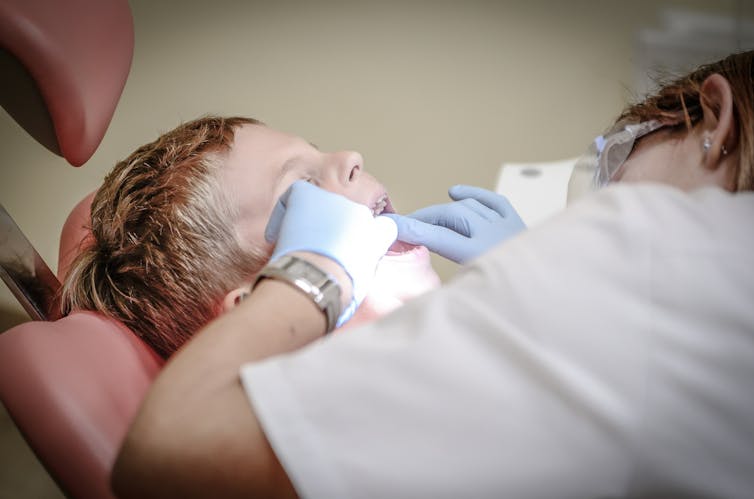Why Canada still needs a public dental health plan despite decades of medicare

Canadians delight ourselves on our health-treatment technique, primarily in comparison with our neighbours to the south. But there are major gaps in coverage. Approximately 1-third of Canadians do not have dental insurance policies, and that number climbs to 50 per cent for reduced-income Canadians. Without having dental treatment, small problems like cavities can end result in critical bacterial infections.
Above 10 per cent of Canadians reside with suffering in their mouth. Folks pay a visit to crisis rooms for care that could be better shipped in a dental place of work. Canadians drop tooth that could have been saved, which tends to make it tough to try to eat nutritiously and can make it extra tough to obtain perform.
Inadequate oral health can also complicate or lead to diabetic issues, coronary heart sickness and other persistent health conditions.
Why was dental treatment not provided in medicare?
My forthcoming guide, The Smile Gap: The Background of Oral Health and Social Inequality, explores why dental care was still left out of medicare. The 1964 Royal Commission on Health Services, which established the phase for medicare, encouraged the institution of a dental care plan for children, using dentists and dental gurus with considerably less instruction known as dental auxiliaries.
The notion was to start off with more youthful small children and then broaden eligibility to more mature youngsters. Sooner or later, adults may be provided.

Creator delivered
At the time, there was a sizeable scarcity of dentists in Canada and a universal program was not simple. Dentists opposed the notion of publicly funded denticare, specifically the use of auxiliaries to take care of little ones.
The plan of utilizing auxiliaries arrived from New Zealand, where specifically educated dental nurses presented treatment in universities. Inspite of the good results of the New Zealand software, dentists did not imagine that dental auxiliaries had ample schooling to operate with out a dentist’s direct supervision.
Dentists thought that more emphasis need to be positioned on avoidance, in particular education and water fluoridation. Numerous had been preventing for drinking water fluoridation in their communities for above a 10 years. Drinking water fluoridation had been proven to appreciably reduce cavities and however Canadians frequently rejected water fluoridation in municipal referendums, primary dentists to conclude that Canadians did not benefit their oral health.
When the Medical Treatment Act of 1966 handed, dental treatment was not bundled. For the most section, dentists have been delighted that they could continue on their techniques without point out interference.
The provinces stage in
My guide handles the historical past of dental plans in Canada. Even before medicare, pretty a several provinces supplied general public dental insurance policy for men and women on social guidance.
The Ontario dental insurance policy method, for illustration, was founded in 1958 to offer care for kids whose moms been given state assist. In 1965, all mother and father who received relatives added benefits became suitable. Sad to say, quite a few folks who lived in regions devoid of a dentist had been not able to obtain the system.
In accordance to a research by dental public health researcher James Leake, dentists also experienced complications with the method. They disliked it mainly because it only involved basic providers and they located it skillfully complicated to not deliver the most effective achievable provider. Dentists also complained that individuals on social support were being much far more most likely to miss appointments than other clients.

(Pixabay)
Accessibility to treatment continues to be a difficulty right now. When all provinces deliver some dental companies to persons on social guidance, dentists are usually reimbursed at fewer than their regular charges, building them hesitant to provide these patients.
Dental care for kids
In the yrs soon after the 2nd Environment War, some provinces began furnishing dental treatment to all little ones. The most revolutionary application was in Saskatchewan, where by dental nurses — later termed dental therapists — offered care in colleges starting in the mid-1970s. The Higher education of Dental Surgeons opposed the application and it was cancelled in 1987.
In other provinces, little ones obtained state-funded treatment in private dental offices. Whilst there were being major cutbacks to children’s systems in the late 20th century, Québec, Newfoundland and Labrador, Prince Edward Island and Nova Scotia still have common dental care plans for youngsters. In the previous 15 many years, there has been an enlargement of focused applications aimed at very low-money kids, these kinds of as Ontario’s Healthy Smiles
Increase of non-public dental insurance plan

(Pixabay)
In the 1970s, unions commenced demanding dental insurance. Businesses that no for a longer period wanted to offer medical rewards to their staff members commenced to provide dental coverage. By 1982, approximately two-thirds of collective agreements incorporated dental benefits and just above a single-third of Canadians had personal dental insurance policies. By the mid-90s, around fifty percent of all Canadians had non-public dental insurance.
Even while dental insurance policy did not protect all companies, obtain to insurance diminished the need for universal dental insurance policy.
Gaps in care
This has remaining some Canadians devoid of dental care. In 2007, journalist Moira Welsh wrote about Jason Jones for the Toronto Star. Jones was a young male, but his teeth had rotted away. In serious agony, he put in his wife’s lifestyle personal savings to get rid of them.
At the time the article was published, Jones had just two teeth, which the dentists experienced remaining in as anchors for dentures. He could only consume gentle food items, his visual appearance was adversely impacted and he couldn’t locate a work.
Jones’ tale had a satisfied ending. In response to the entrance-web site tale, numerous dentists and denturists achieved out and dentist Raj Singh supplied him with a new smile. Regretably, lots of other Canadians are not so fortunate.
The long run of denticare
In 2011, the Canadian Centre for Policy Options posted the report Placing Our Dollars Wherever Our Mouth Is, drawing consideration to the need to have for improved dental care. In 2019, the NDP incorporated denticare in its federal election system. The Liberal government promised to discover common dental care in its throne speech of December 2019, and in October 2020, the Parliamentary Spending plan Business costed a method to deliver dental care to all Canadians with a household earnings of less than $90,000, similar to what the Non-Insured Health Positive aspects plan presents for Indigenous folks.
The NDP designed denticare a essential demand from customers in its 2021 electoral system. Most not too long ago, the Liberal authorities agreed to offer a denticare plan, commencing with little ones underneath 12 and increasing it until finally all people with a domestic money of under $90,000 is protected, with no co-payments for people today with a family members revenue of underneath $70,000.
If the Liberals abide by by means of on their guarantee, this will cut down the gaps in treatment and ease the struggling of lots of Canadians.








